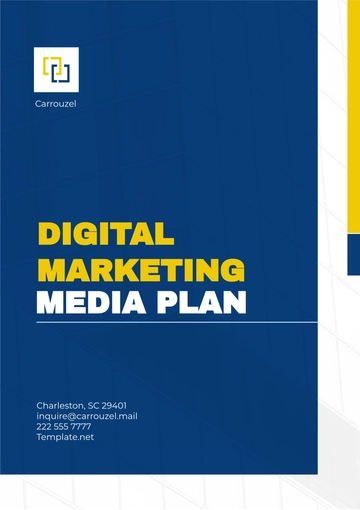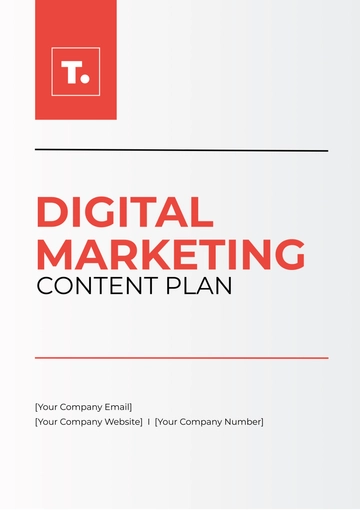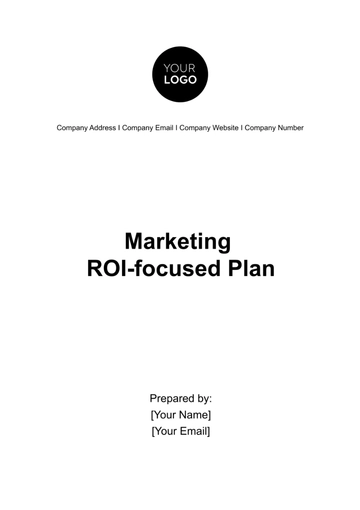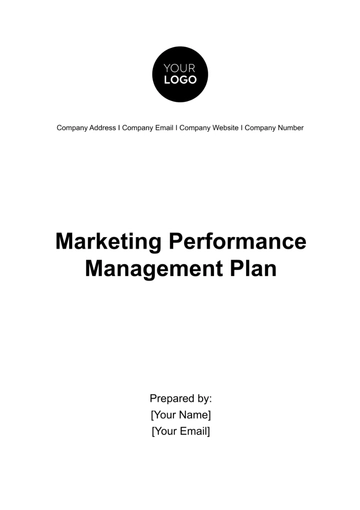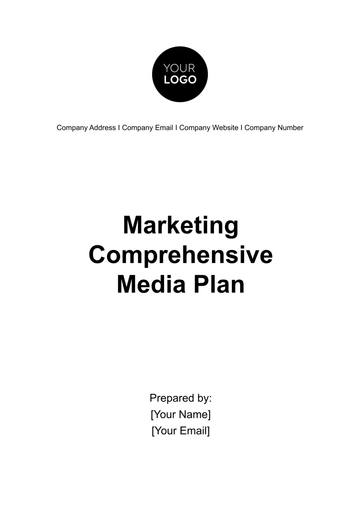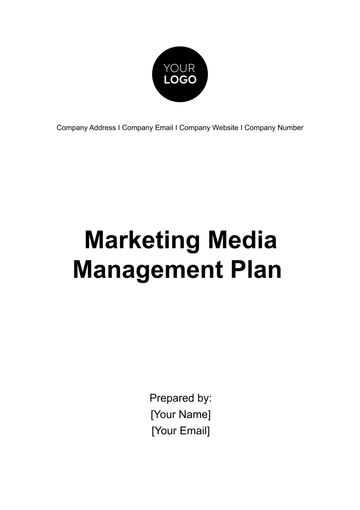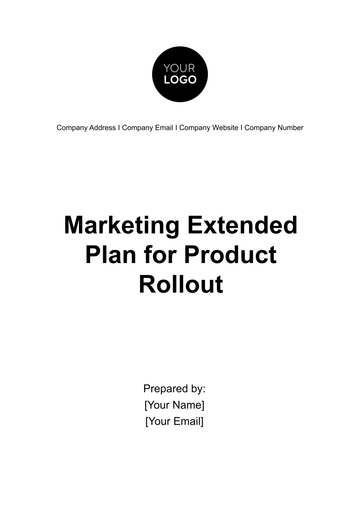Free Simple Marketing Work Plan

Name: | [YOUR NAME] |
Company: | [YOUR COMPANY NAME] |
Department: | [YOUR DEPARTMENT] |
Date: | [DATE] |
I. Executive Summary
In the Marketing Work Plan, we outline a comprehensive strategy to achieve our marketing goals efficiently. This document is a roadmap for effectively executing marketing campaigns and initiatives, ensuring alignment with our overarching business objectives. By following this plan, we aim to enhance brand visibility, drive customer engagement, and ultimately increase revenue.
Key Objectives:
Increase brand awareness by 30% within the next 6 months.
Generate 500 leads through targeted marketing campaigns.
Improve customer retention by 15% through enhanced communication strategies.
II. Strategic Objectives
A. Market Analysis
Before implementing any marketing initiatives, conducting a thorough market analysis is essential to understand our target audience, industry trends, and competitors. This analysis will inform our decision-making process and help us tailor our strategies for maximum impact.
Conduct a comprehensive SWOT analysis to identify strengths, weaknesses, opportunities, and threats.
Utilize market research tools such as surveys, focus groups, and data analytics to gather valuable insights.
Evaluate competitor strategies to identify gaps and opportunities for differentiation.
B. Target Audience Identification
To ensure our marketing efforts resonate with our audience, it's crucial to identify and understand our target demographic. By creating detailed buyer personas, we can tailor our messaging and channels to effectively reach and engage potential customers.
Segment the target audience based on demographics, psychographics, and behavior.
Create detailed buyer personas outlining the characteristics, pain points, and preferences of each segment.
Map the customer journey to identify touchpoints and opportunities for engagement.
III. Tactics and Strategies
A. Content Marketing
Content marketing plays a pivotal role in educating, engaging, and nurturing our audience. By creating valuable and relevant content, we can position [Your Company Name] as a thought leader in the industry and attract qualified leads.
Develop a content calendar outlining topics, formats, and publishing schedules.
Create blog posts, articles, videos, infographics, and other content assets.
Promote content through various channels such as social media, email newsletters, and partnerships.
B. Digital Marketing
In today's digital age, an effective digital marketing strategy is essential for reaching our target audience where they spend most of their time. By leveraging digital channels such as Facebook, Instagram, Twitter, and LinkedIn, we can amplify our brand message and drive conversions.
Optimize website content and structure for search engines to improve visibility.
Run targeted social media advertising campaigns to reach specific audience segments.
Deploy email marketing automation to nurture leads and drive customer retention.
IV. Timelines and Milestones
A. Campaign Timeline
January - March 2050: Winter Campaign
January 10 - March 10: Execute market analysis and finalize strategic objectives.
January 15 - March 15: Develop a content calendar and create initial content assets.
January 20 - March 20: Launch digital marketing campaigns and monitor performance.
B. Key Milestones:
January 5, 2050: Complete market analysis and SWOT analysis.
January 12, 2050: Publish the first batch of blog posts and social media content.
February 1, 2050: Achieve a 20% increase in website traffic.
V. Resource Allocation
A. Budget Allocation
Content Creation: 40% of budget
Digital Advertising: 30% of budget
Marketing Tools and Software: 30% of budget
B. Team Responsibilities
[Your Name], Marketing Manager: Oversee overall strategy and campaign execution.
Elvie Block: Content creation and management.
Lester Nolan: Digital advertising and analytics.
VI. Monitoring and Evaluation
A. Key Performance Indicators (KPIs):
Website Traffic: Increase by 20%.
Lead Generation: Achieve 100 new leads per month.
Engagement Rate: Maintain a minimum engagement rate of 5% on social media platforms.
B. Evaluation Process
Regularly monitor and analyze campaign performance using Google Analytics.
Conduct monthly or quarterly reviews to assess progress against goals and make necessary adjustments.
Document lessons learned and best practices for future campaigns.
VII. Conclusion
In conclusion, the Marketing Work Plan Template offers a strategic roadmap for achieving marketing goals efficiently. By analyzing markets, identifying target audiences, and employing tactics like content marketing and digital advertising, businesses can enhance brand visibility and drive engagement. Timelines, resource allocation, and performance indicators ensure systematic monitoring and evaluation, facilitating continuous improvement. By adopting this template, organizations can navigate marketing challenges effectively and achieve their objectives.
- 100% Customizable, free editor
- Access 1 Million+ Templates, photo’s & graphics
- Download or share as a template
- Click and replace photos, graphics, text, backgrounds
- Resize, crop, AI write & more
- Access advanced editor
The Simple Marketing Work Plan Template from Template.net provides an easy-to-use framework for planning and executing marketing strategies. Fully customizable and editable, you can tailor each section—goals, campaigns, and deadlines—according to your business needs. Use our AI Editor Tool to quickly adjust and align the template with your marketing objectives. It’s the perfect tool for staying organized and focused on the key activities that drive your marketing efforts forward.
You may also like
- Finance Plan
- Construction Plan
- Sales Plan
- Development Plan
- Career Plan
- Budget Plan
- HR Plan
- Education Plan
- Transition Plan
- Work Plan
- Training Plan
- Communication Plan
- Operation Plan
- Health And Safety Plan
- Strategy Plan
- Professional Development Plan
- Advertising Plan
- Risk Management Plan
- Restaurant Plan
- School Plan
- Nursing Home Patient Care Plan
- Nursing Care Plan
- Plan Event
- Startup Plan
- Social Media Plan
- Staffing Plan
- Annual Plan
- Content Plan
- Payment Plan
- Implementation Plan
- Hotel Plan
- Workout Plan
- Accounting Plan
- Campaign Plan
- Essay Plan
- 30 60 90 Day Plan
- Research Plan
- Recruitment Plan
- 90 Day Plan
- Quarterly Plan
- Emergency Plan
- 5 Year Plan
- Gym Plan
- Personal Plan
- IT and Software Plan
- Treatment Plan
- Real Estate Plan
- Law Firm Plan
- Healthcare Plan
- Improvement Plan
- Media Plan
- 5 Year Business Plan
- Learning Plan
- Marketing Campaign Plan
- Travel Agency Plan
- Cleaning Services Plan
- Interior Design Plan
- Performance Plan
- PR Plan
- Birth Plan
- Life Plan
- SEO Plan
- Disaster Recovery Plan
- Continuity Plan
- Launch Plan
- Legal Plan
- Behavior Plan
- Performance Improvement Plan
- Salon Plan
- Security Plan
- Security Management Plan
- Employee Development Plan
- Quality Plan
- Service Improvement Plan
- Growth Plan
- Incident Response Plan
- Basketball Plan
- Emergency Action Plan
- Product Launch Plan
- Spa Plan
- Employee Training Plan
- Data Analysis Plan
- Employee Action Plan
- Territory Plan
- Audit Plan
- Classroom Plan
- Activity Plan
- Parenting Plan
- Care Plan
- Project Execution Plan
- Exercise Plan
- Internship Plan
- Software Development Plan
- Continuous Improvement Plan
- Leave Plan
- 90 Day Sales Plan
- Advertising Agency Plan
- Employee Transition Plan
- Smart Action Plan
- Workplace Safety Plan
- Behavior Change Plan
- Contingency Plan
- Continuity of Operations Plan
- Health Plan
- Quality Control Plan
- Self Plan
- Sports Development Plan
- Change Management Plan
- Ecommerce Plan
- Personal Financial Plan
- Process Improvement Plan
- 30-60-90 Day Sales Plan
- Crisis Management Plan
- Engagement Plan
- Execution Plan
- Pandemic Plan
- Quality Assurance Plan
- Service Continuity Plan
- Agile Project Plan
- Fundraising Plan
- Job Transition Plan
- Asset Maintenance Plan
- Maintenance Plan
- Software Test Plan
- Staff Training and Development Plan
- 3 Year Plan
- Brand Activation Plan
- Release Plan
- Resource Plan
- Risk Mitigation Plan
- Teacher Plan
- 30 60 90 Day Plan for New Manager
- Food Safety Plan
- Food Truck Plan
- Hiring Plan
- Quality Management Plan
- Wellness Plan
- Behavior Intervention Plan
- Bonus Plan
- Investment Plan
- Maternity Leave Plan
- Pandemic Response Plan
- Succession Planning
- Coaching Plan
- Configuration Management Plan
- Remote Work Plan
- Self Care Plan
- Teaching Plan
- 100-Day Plan
- HACCP Plan
- Student Plan
- Sustainability Plan
- 30 60 90 Day Plan for Interview
- Access Plan
- Site Specific Safety Plan


